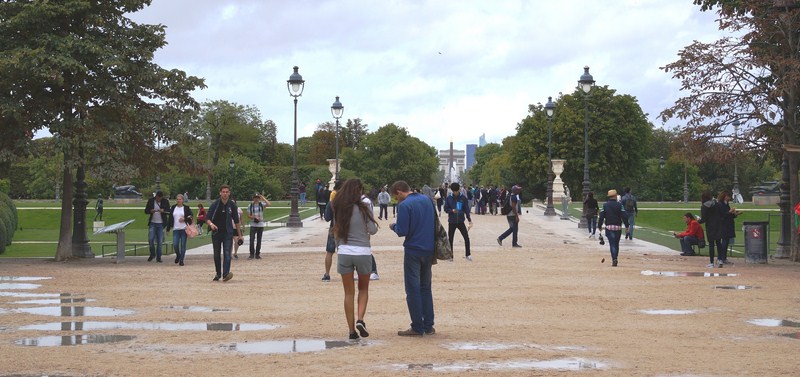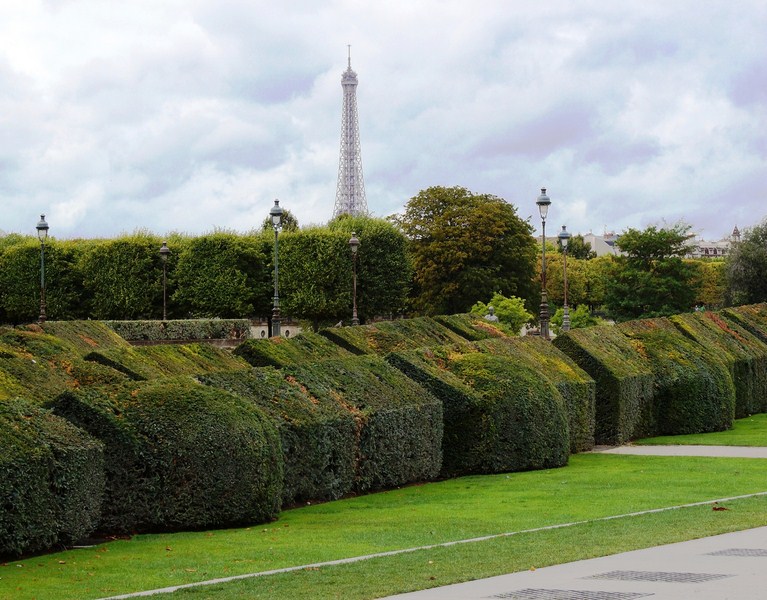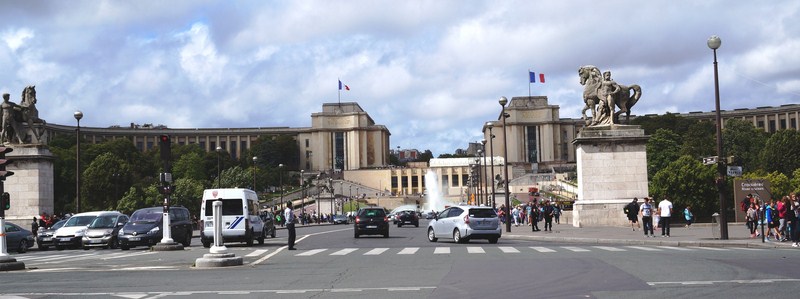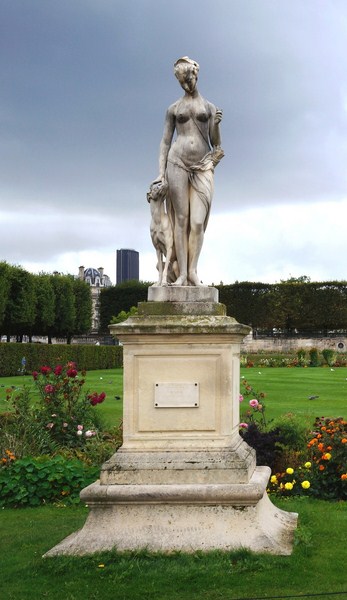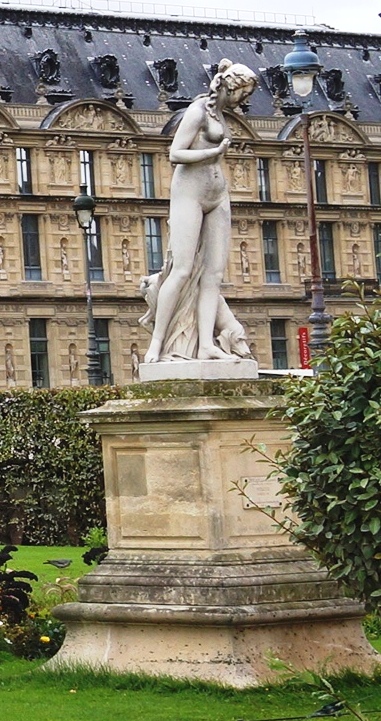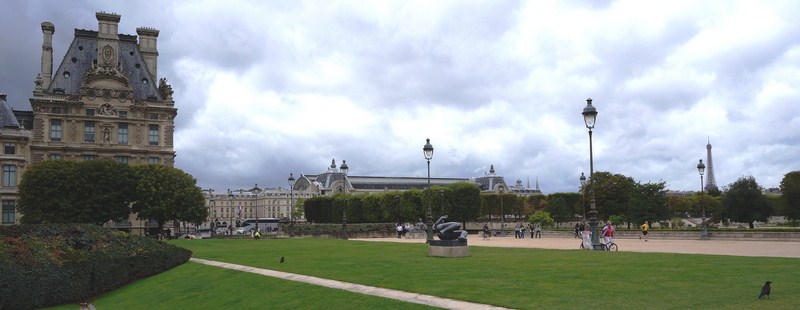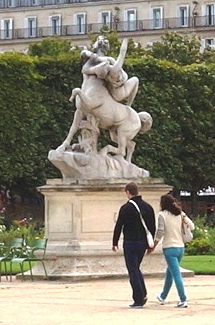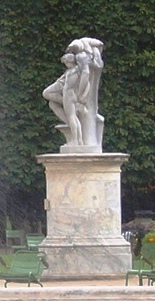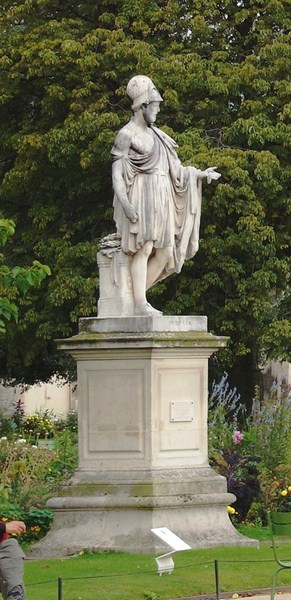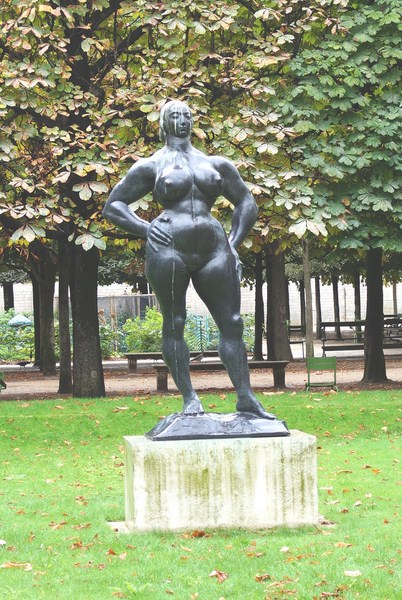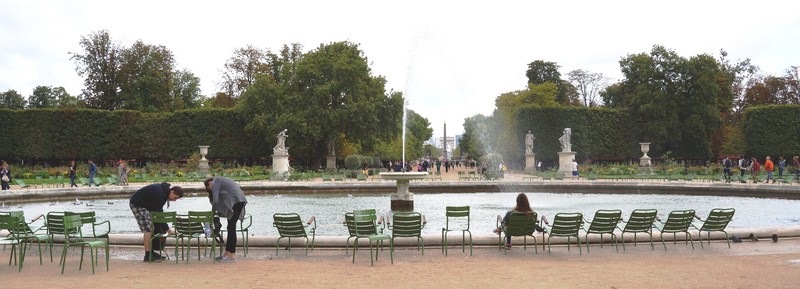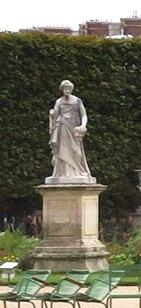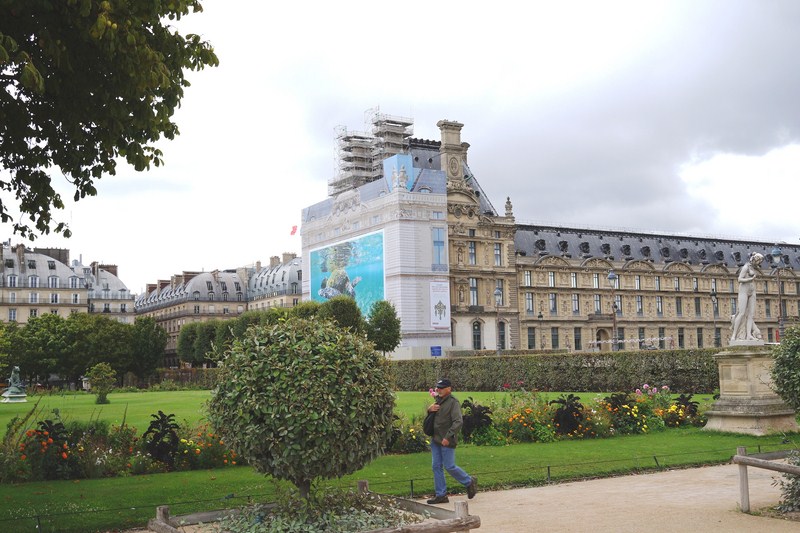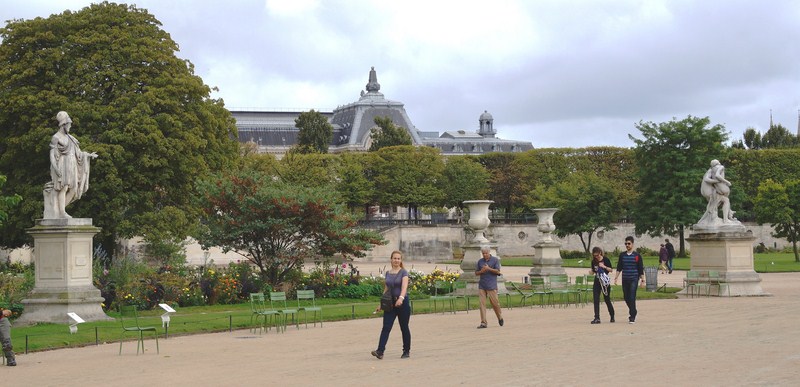The Tuileries Garden (French: Jardin des Tuileries), a public garden located between the Louvre and the Place de la Concorde, a place where ordinary Parisians celebrated, met, strolled, relaxed, enjoyed the fresh air and greenery and be entertained.
Check out “Louvre Museum” and “Place de la Concorde“
The name of the garden, as well the Tuileries Palace (burned in 1870 during the uprising of the Paris Commune), was derived from the tile-making factories called tuileries (from the French tuile, meaning “tile”) which once occupied the area since the 13th century.
Here is the historical timeline of the garden:
- In 1564, Queen Catherine de Medici commissioned Bernard de Carnesse, a landscape architect from Florence, to create an Italian Renaissance garden (the largest and most beautiful garden in Paris at the time) in an enclosed space 500 m. long and 300 m. wide, separated from the new Tuileries Palace by a lane. It was to have fountains, a labyrinth, a grotto and was decorated with faience images of plants and animals, made by Bernard Palissy, whom Catherine had tasked to discover the secret of Chinese porcelain. Six alleys divided it into rectangular compartments which were planted with lawns, flower beds, and small clusters of five trees (called quinconces) and, more practically, with kitchen gardens and vineyards. Catherine used this garden for lavish royal festivities honoring ambassadors from Queen Elizabeth I of England, and the marriage of her daughter, Marguerite de Valois, to Henri III of Navarre (better known as Henry IV, King of France and of Navarre).
- In 1588, after King Henry III was forced to flee Paris, the gardens fell into disrepair.
- Henry IV (1589–1610), his successor, and his gardener, Claude Mollet, restored the gardens. They built a covered promenade the length of the garden, and a parallel alley planted with mulberry trees (where he hoped to cultivate silkworms and start a silk industry in France). He also built a rectangular, 65 m. by 45 m. ornamental lake of with a fountain supplied with water by the new pump called La Samaritaine (built in 1608 on the Pont Neuf). The area between the palace and the former moat of Charles V was turned into the “New Garden” (Jardin Neuf) with a large fountain in the center. Henry IV used the gardens for relaxation and exercise.
- In 1610, at the death of his father, the Tuileries Gardens became the enormous playground of 9 year old Louis XIII who used it for hunting and where he kept a menagerie of animals. On the north side of the gardens, Marie de’ Medici established a riding school, stables and a covered manege for exercising horses. The gardens were turned into a pleasure spot for the nobility when the king and court were absent from Paris.
- In 1630, a former rabbit warren and kennel, at the west rampart of the garden, was made into a flower-lined promenade and cabaret (where the daughter of Gaston d’Orléans and the niece of Louis XIII, known as La Grande Mademoiselle, held a sort of court). The “New Garden” of Henry IV (the present-day Carousel) became known as the “Parterre de Mademoiselle.”
- In 1652, “La Grande Mademoiselle” was expelled from the chateau and garden for having supported the Fronde, an uprising against her cousin, the young Louis XIV.
- In 1662, to celebrate the birth of his first child, Louis XIV held a vast pageant of mounted courtiers in the New Garden (enlarged by filling in Charles V’s moat and had been turned into a parade ground). Thereafter, the square was known as the Place du Carrousel.
- In 1664, Colbert, the king’s superintendent of buildings, commissioned the landscape architect André Le Nôtre (the grandson of Pierre Le Nôtre, one of Catherine de’ Medici’s gardeners, and his father Jean had also been a gardener at the Tuileries), to redesign the entire garden. Le Nôtre immediately began transforming the Tuileries into a formal jardin à la française (a style he had first developed at Vaux-le-Vicomte and perfected at Versailles), based on symmetry, order and long perspectives.
- In 1667, at the request of Charles Perrault (the famous author of Sleeping Beautyand other fairy tales), the Tuileries Garden was eventually opened to the public (with the exception of beggars, “lackeys” and soldiers). It was the first royal garden to be open to the public.
- In 1682, furious with the Parisians for resisting his authority, the king abandoned Paris and moved to Versailles. The garden was abandoned for nearly forty years.
- In 1719, La Renommée and Mercure, two large equestrian statuary groups by the sculptor Antoine Coysevox, were brought from the king’s residence at Marly and placed at the west entrance of the garden. Along the Grande Allée, other statues by Nicolas Coustou and Guillaume Coustou the Elder, Corneille Van Clève, Sebastien Slodz, Thomas Regnaudin and Antoine Coysevox were placed. To make access to the garden easier, a swing bridge was placed at the west end over the moat. A grand vestibule to the garden was created with the place Louis XV (now Place de la Concorde). Certain holidays, such as August 25, the feast day of Saint Louis, were celebrated with concerts and fireworks in the park.
- On October 6, 1789, as the French Revolution began, King Louis XVI was brought against his will to the Tuileries Palace and the garden was closed to the public except in the afternoon. A part of the garden, first at the west end of the Promenade Bord d’eaux, then at the edge of the Place Louis XV, was given for the private use of Queen Marie Antoinette and the Dauphin.
- On the evening of September 18, 1791, after the king’s failed attempt to escape France and during the festival organized to celebrate the new French Constitution, when the alleys of the park were illuminated with pyramids and rows of lanterns, the royal family was allowed to walk in the park.
- On August 10, 1792, a mob stormed the Tuileries Palace and the king’s Swiss guards were chased through the gardens and massacred.
- After the king’s removal from power and execution, the Tuileries became the National Garden (Jardin National) of the new French Republic.
- In 1794, the painter Jacques-Louis David, and to his brother in law, the architect August Cheval de Saint-Hubert were assigned the renewal of the gardens by the new government, conceiving a garden decorated with Roman porticos, monumental porches, columns, and other classical decoration. The project was never completed and all that remains today are the two exedres, semicircular low walls crowned with statues by the two ponds in the center of the garden. While David’s project was not finished, large numbers of statues from royal residences were brought to the gardens for display. The garden was also used for revolutionary holidays and festivals.
- On June 8, 1794, Robespierre organized a ceremony in the Tuileries in honor of the Cult of the Supreme Being, with sets and costumes designed by Jacques-Louis David. After a hymn written for the occasion, Robespierre set fire to mannequins representing Atheism, Ambition, Egoism and False Simplicity, revealing a statue of Wisdom.
- In 1780, public toilets were added.
- On December 1, 1783, a famous early balloon ascent, by Jacques Alexandre César Charlesand Nicolas Louis Robert, was made from the garden. Small food stands were placed in the park, and chairs could be rented for a small fee.
- On April 2, 1810, Napoleon Bonaparte used the garden as passage of his own wedding procession when he married the Archduchess Marie-Louise of Austria.
- After the fall of Napoleon, the garden briefly became the encampment of the occupying Austrian and Russian soldiers.
- After the restoration of the monarchy, and the new King Charles X renewed an old tradition and celebrated the feast day of Saint Charles in the garden.
- In 1830, after a brief revolution, the new king Louis-Philippe, wanting a private garden within the Tuileries, separated a section of the garden in front of the palace with a fence, decorating the new private garden with a small moat, flower beds and eight new statues by sculptors of the period.
- In 1852, following another revolution and the short-lived Second Republic, the new Emperor Louis Napoleon enlarged his private reserve within the garden further to the west as far as the north–south alley that crossed the large round basin, so that included the two small round basins. His new garden was decorated with beds of exotic plants and flowers and new statues.
- In 1859, Louis Napoleon made the Terrasse du bord-de-l’eau into a playground for his son, the Prince Imperial. He also constructed the Jeu de paume and the Orangerie, twin pavilions at the west end of the garden and built, at the west entrance, a new stone balustrade. From May to November, when The Emperor was not in Paris, the entire garden, including his private garden and the playground, were usually open to the public.
- In 1883, the ruins of the burnt out palace were torn and the empty site, between the two pavilions of the Louvre, became part of the garden.
- At the 1900 Summer Olympics, the Gardens hosted the fencing
- In the years between the two World Wars, the Jeu de paume tennis court was turned into a gallery, its western part was used to display the Water Lilies series of paintings by Claude Monet. The Orangerie became an art gallery for contemporary western art.
- At the end of the 19th and beginning of the 20th century, the Tuilieries Garden was filled with entertainments for the public (acrobats, puppet theaters, lemonade stands, small boats on the lakes, donkey rides, and stands selling toys).
- In 1914, during the First World War, the statues in the garden were surrounded by sandbags.
- In 1918, two German long-range artillery shells landed in the garden.
- During the German Occupation of World War II (1940 to 1944), the Jeu de paume was used by the Germans as a depot for storing art they stole or expropriated from Jewish families.
- In 1927, the Jeu de Paume became an annex of the Luxembourg Palace Museum for the display of contemporary art from outside France.
- In 1944, the liberation of Paris saw considerable fighting in the garden and, during the battle, Monet’s paintings Water Lilies were seriously damaged.
- From 1947 until 1986, the Jeu de Paume served as the Musée du Jeu de Paume, which held many important Impressionist works now housed in the Musée d’Orsay.
- In 1964–65, André Malraux (the Minister of Culture for President Charles de Gaulle) removed the 19th century statues which surrounded the Place du Carrousel and replaced them with contemporary sculptures by Aristide Maillol.
- In 1994, as part of the Grand Louvre project launched by President François Mitterrand, the Belgian landscape architect Jacques Wirtz remade the garden of the Carrousel, adding labyrinths and a fan of low hedges radiating from the triumphal arch in the square.
- In 1995, the Jardin du Carrousel was remade to showcase a collection of 21 statues by Aristide Maillol, which had been put in the Tuileries in 1964.
- In 1998, under President Jacques Chirac, works of modern sculpture by Jean Dubuffet, Henri Laurens, Étienne Martin, Henry Moore, Germaine Richier, Auguste Rodin and David Smith were placed in the garden.
- In 2000, the works of living artists (Magdalena Abakanowicz, Louise Bourgeois, Tony Cragg, Roy Lichtenstein, François Morrellet, Giuseppe Penone, Anne Rochette and Lawrence Weiner) were added. At the same time, another ensemble of three works by Daniel Dezeuze, Erik Dietman and Eugène Dodeigne, called Prière Toucher (Eng: Please Touch), was added.
- At the beginning of the 21st century, French landscape architects Pascal Cribier and Louis Benech have been working to restore some of the early features of the André Le Nôtre garden.
Check out “Musee d’Orsay“
The Grand Carré (Large Square), the eastern, open part of the Tuilieries Garden, still follows the formal plan of the Garden à la française created in the 17th century by André Le Nôtre. The eastern part, surrounding the round pond, was the private garden, separated from the rest of the Tuileries by a fence, of Louis Philippe and Napoleon III. Most of its statues were put in place in the 19th century.
Nymphe (1866) and Diane Chasseresse (Diana the Huntress) (1869), both done by Louis Auguste Lévêque, marks the beginning of the central allée which runs east-west through the park.
Tigre terrassant un crocodile (Tiger overwhelming a crocodile, 1873) and Tigresse portant un paon à ses petits (Tigress bringing a peacock to her young, 1873), both by Auguste Cain, are located by the two small round ponds.
The large round pond is surrounded by statues on themes from antiquity, allegory, and ancient mythology and in violent poses alternating with those in serene poses. On the south side, starting from the east entrance of the large round pond, they are:
- La Misère (Misery) by Jean-Baptiste Hugues (1905)
- Périclès distribuant les couronnes aux artistes (Pericles Giving Crowns to Artists) by Jean-Baptiste Debay Pėre (1835)
- Le Bon Samaritain (The Good Samaritan) by François Sicard (1896)
- Alexandre Combattant (Alexander Fighting) by Charles Nanteuil (1836)
- Cincinnatus by Denis Foyatier (1834)
- Médée by Paul Jean Baptiste Gasq (1896)
On the north side, starting at the west entrance to the pond, they are:
- Le Serment de Spartacus (The Oath of Spartacus) by Louis Ernest Barrias (1869)
- La Comédie by Julien Toussaint Roux (1874)
- Le Centaur Nessus enlevant Dėjanire (The Centaur Nessus Carrying Off Dejanire) by Laurent Honoré Marqueste (1892)
- Thésée combattant le Minotaure (Theseus Fighting the Minotaur) by Étienne-Jules Ramey (1821)
- Cassandre se met sous la protection de Pallas by Aimé Miller (1877)
- Caïn venant de tuer son frère Abel (Cain After Killing His Brother Abel) by Henri Vidal (1896)
Le Grand Couvert, the part of the garden covered with trees, has two cafes named after two famous cafes once located in the garden – the Café Very (which had been on the Terrace des Feuiillants in the 18th–19th century) and the Café Renard (which in the 18th century had been a popular meeting place on the western terrace).
It also contains the two exedras (low curving walls built to display statues which survived from the French Revolution), built in 1799 by Jean Charles Moreau (as part of a larger unfinished project designed by painter Jacques-Louis David in 1794), now decorated with plaster casts of moldings on mythological themes from the park of Louis XIV at Marly.
The Grand Couvert also contains a number of important works of the 20th century and contemporary sculpture, including:
- Apollon, (about 1933) by Paul Belmondo
- Jeanette (about 1933) by Paul Belmondo
- La Grande Musicienne (1937) by Henri Laurens
- L’Échiquier, Grand (1959) by Germaine Richier
- Primo Piano II (1962) by David Smith
- Personnages III (1967) by Étienne Martin
- Brushstroke Nude(1993) by Roy Lichtenstein
- Force et Tendresse (1996) by Eugène Dodeigne
- Manus Ultimus, (1997) by Magdalena Abakanowicz
- L’Ami de personne, (1999) by Erik Dietman
- Confidence(2000) by Daniel Dezeuze
- Arbre des voyelles, (2000) by Giuseppe Penone
- Un, deux, tros, nous(2000) by Anne Rochette
The Orangerie (Musée de l’Orangerie), built in 1852 by the architect Firmin Bourgeois, is located at the west end of the garden, close to the Seine River. Since 1927, it has displayed many large examples of Claude Monet‘s Water Lilies series as well as the Walter-Guillaume collection of Impressionist painting.
On the terrace are four works of sculpture by Auguste Rodin: Le Baiser (1881–1898); Eve (1881) and La Grande Ombre (1880) and La Meditation avc bras (1881–1905). It also has a modern work, Grand Commandement blanc (1986) by Alain Kirili.
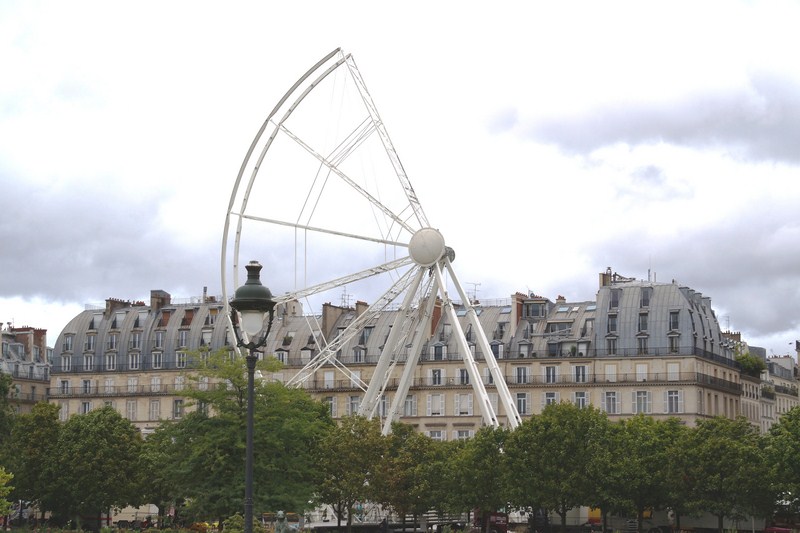
The partially installed Roue de Paris, a 60-m. (200-ft.) tall transportable Ferris wheel, originally installed on the Place de la Concorde for the 2000 millennium celebrations.
The Jardin du Carrousel, also known as the Place du Carrousel, is the part of the garden that used to be enclosed by the two wings of the Louvre and by the Tuileries Palace. In the 18th century it was used as a parade ground for cavalry and other festivities. The Arc de Triomphe du Carrousel, its central feature, was built to celebrate the victories of Napoleon, with bas-relief sculptures of his battles by Jean Joseph Espercieux.
Check out “Arc de Triomphe du Carrousel”
The elevated Terrasse (terrace), between the Carrousel and the rest of the garden, used to be at the front of the Tuileries Palace which, after the Palace was burned in 1870, was made into a road, which was put underground in 1877. The terrace is decorated by two large vases which used to be in the gardens of Versailles, and two statues by Aristide Maillol; the Monument to Cézanne on the north and the Monument aux morts de Port Vendres on the south.
From the Terrasse, two stairways descend to the moat named for Charles V of France, (who rebuilt the Louvre in the 14th century), part of the old fortifications which originally surrounded the palace. On the west side are traces left by the fighting during the unsuccessful siege of Paris by Henry IV of France in 1590 during the French Wars of Religion.
Since 1994, the moat has been decorated with statues from the facade of the old Tuileries Palace and with bas-reliefs made in the 19th century during the Restoration of the French monarchy which were meant to replace the Napoleonic bas-reliefs on the Arc de Triomphe du Carrousel, but were never put in place.
The Jeu de Paume (Galerie nationale du Jeu de Paume), built in 1861 by the architect Viraut, was enlarged in 1878. Today, it is used for exhibits of modern and contemporary art. On the terrace in front of the Jeu de Paume is the Le Bel Costumé (1973), a work of sculpture by Jean Dubuffet.
Tuileries Garden: 1st arrondissement, Paris, France

